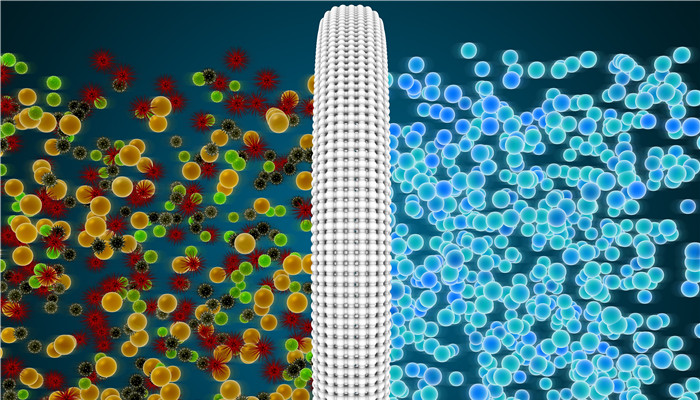
Research enthusiasm for lithium adsorbents (lithium extraction adsorbents) in my country is rising, and aluminum-based lithium adsorbents have achieved industrial development.
Lithium adsorbent, also known as lithium-extracting adsorbent and lithium ion adsorbent, refers to an ion sieve material that can adsorb lithium ions and separate them from water or other solutions. Lithium adsorbents usually have the advantages of high selectivity, high adsorption efficiency, regeneration, and strong anti-pollution ability, and have broad application prospects in aerospace, electronic components, batteries, sewage treatment and other fields.
There are many types of lithium adsorbents, which can be divided into aluminum-based lithium adsorbents, titanium-based lithium adsorbents, and manganese-based lithium adsorbents according to different base materials. Aluminum-based lithium adsorbents refer to lithium adsorbents with aluminum hydroxide as the main structure. They have the advantages of good cycle stability, low energy consumption, fast adsorption rate, and long service life. They can be used for lithium extraction and chlorine extraction from magnesium sulfate subtype brine salt lakes. It is the only lithium adsorbent in my country that has achieved industrialization in scenarios such as lithium extraction from chemical brine salt lakes. In the future, with in-depth research and technological advancement, the industrialization process of my country’s titanium-based lithium adsorbents and manganese-based lithium adsorbents will be accelerated.
According to the “2023-2028 China Lithium Adsorbent (Lithium Extraction Adsorbent) Industry Market In-depth Research and Development Prospects Forecast Report》 shows that lithium adsorbents are widely used in aerospace, electronic components, batteries, sewage treatment, etc. The battery field is the largest demand end for lithium adsorbents, which can extract lithium ions from the electrolyte and be used as cathode materials for lithium-ion batteries. In recent years, my country’s lithium-ion battery market demand has grown, which provides favorable conditions for the development of the lithium adsorbent industry. In addition, lithium adsorbents can also be used in the process of extracting lithium from salt lakes, with high-purity lithium salt as its end product.
Benefiting from the increased prosperity of the salt lake lithium extraction industry, my country’s enthusiasm for lithium adsorbent research continues to rise. In January 2023, the scientific and technological achievements transformation project of the Qinghai Salt Lake Institute of the Chinese Academy of Sciences “Preparation of Salt Lake Lithium Adsorbents and Development of Graded Electric Field-Assisted Desorption Processes” successfully passed acceptance. The project successfully prepared high-performance manganese-based and aluminum-based lithium adsorbents. , the dynamic adsorption capacity of the product is greatly improved.
The main manufacturers of lithium adsorbents in my country include Beijing Bishuiyuan Technology Co., Ltd., Xi’an Lanxiao Technology New Materials Co., Ltd., Jiangsu Jiuwu High-tech Co., Ltd., Qinghai Salt Lake Industrial Co., Ltd., etc. Jiuwu High-Tech is a representative enterprise of lithium adsorbents in my country. It has independent research and development capabilities for aluminum-based lithium adsorbents and titanium-based lithium adsorbents. Currently, the company is actively promoting a 6,000-ton-per-year lithium adsorbent project.
Industry analysts said that lithium adsorbents have broad application prospects in many fields. As the development of downstream industries accelerates, its market demand is increasing. exuberant. Aluminum-based lithium adsorbents are representative products of lithium adsorbents, with excellent performance and good industry development trends. In recent years, benefiting from the improvement of independent research and development capabilities of local enterprises and related scientific research institutions, my country’s lithium adsorbent production capacity has continued to expand and output has continued to grow.

 微信扫一扫打赏
微信扫一扫打赏

